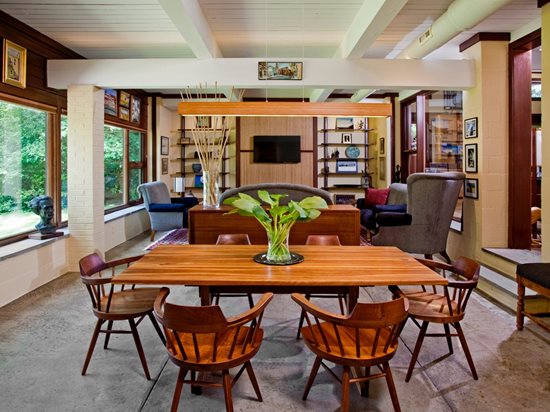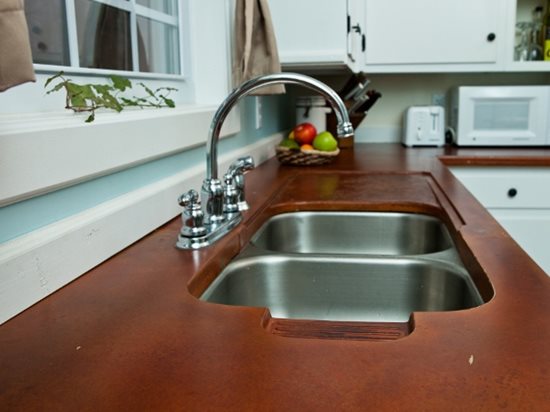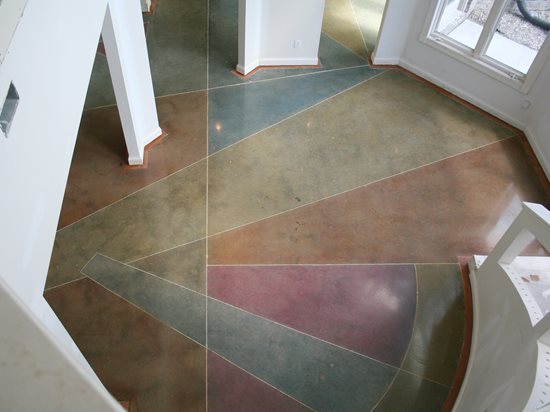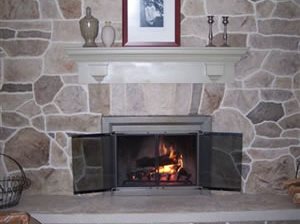- Staining Concrete
- Stamped Concrete
- Concrete Overlays
- Concrete Resurfacing
- Concrete Polishing
- Concrete Dyes
- Colored Concrete
- Indoor Concrete
- Concrete Floors
- Concrete Countertops
- Garage Floor Coatings
- Furniture, Sinks, Fire Bowls
- Basement Floors
- Outdoor Concrete
- Concrete Patios
- Concrete Driveways
- Concrete Pool Decks
- Outdoor Kitchens & Counters
- Outdoor Fireplace
- Concrete Walkways
- Concrete Pavers
- Concrete Walls
- Repair & Maintenance
- Foundation Repair
- Concrete Crack Repair
- Concrete Sealers
- Building with Concrete
- Concrete Homes
- Concrete Basements
- Decorative Concrete
- Fire Resistant
Six Reasons to Remodel with Concrete
One of the most important decisions to be made when remodeling the interior of your home is what materials to use to achieve the designer’s vision while improving the aesthetics and functionality of the living space. The choices are many, ranging from premanufactured products such as laminates and carpeting to natural materials such as stone, granite and wood. Unfortunately, one material that often gets overlooked is concrete, often because it’s considered to be too utilitarian and industrial. That’s far from the truth. Decorative concrete is the ultimate chameleon and can adapt to all tastes and design styles. It’s also versatile and can used for floors, countertops, fireplace surrounds, furniture, bathtubs, walls, and even the kitchen sink. Here are six reasons why remodeling with concrete will give you the maximum return on your investment while transforming the look of your home.

As part of a whole-house transformation, the floors in this mid-century home were polished to create a unique finish. Liquid Stone Concrete Designs, Warminster, Pa.
1. Save money without sacrificing style.
When homeowners embark on a major remodeling project, they dare to dream big even if they don’t have enough money in the budget to afford everything on their wish list. Thanks to the versatility of concrete, you can get that Plan A look you dreamed of on a Plan B budget without sacrificing quality, appearance, or performance. In the kitchen, for example, there are a number of cost-effective ways you can use decorative concrete to dramatically change the entire look of the space while improving its functionality. (see Four Ways to Spice Up a Drab Kitchen with Concrete). If your bathroom needs a major overhaul to make it more appealing, you can use concrete to customize nearly every surface, including the vanity, the sink, the shower enclosure, and even the bathtub. With concrete, you can size and shape elements to fit even the smallest space and choose a color scheme that complements or matches the existing décor.

During a remodel, this small kitchen got an upgrade with new concrete countertops. Reformed Concrete LLC, Quarryville, PA.
2. Keep current with the latest design trends.
“Trendy” isn’t an adjective often used to describe concrete, yet there are many ways this age-old material can be used to reflect today’s hottest design trends. Macala Wright, a writer and marketing professional interested in culture and design, recently released her interior design predictions. You’ll be amazed at how easily decorative concrete fits into her list. In fact, we think the decorative concrete industry actually inspired a few of these trends. Read on to discover how concrete can be used to make Wright’s predictions a reality in your own space.

This floor had been under carpet and was in need of a remodel. Cracks were incorporated into the new design, creating a unique and colorful floor. Artistic Surfaces Inc, Indianapolis, IN.
3. Make a change that stands the test of time.
Many premanufactured flooring and countertop materials have limited life spans and need to be replaced in 5 to 10 years once they begin to show wear and tear. You can avoid that rut by investing in a material that lasts and provides maximum long-term value. Concrete is incredibly durable and has a long life cycle. Concrete floors, for example, are much easier to maintain than carpet and will last a lifetime. Plus they provide the canvas for a spectacular floor surface that can be enhanced by stains, dyes, stencils or decorative overlays. Concrete countertops will also serve you well for decades - both functionally and aesthetically - and are unlikely to ever need replacement. This not only conserves materials and eliminates waste, it saves you the expense and hassle of ripping out worn, outdated countertops.
Check out this Redfin article: 16 Living Room Remodel Tips to Design Your Perfect Space
4. Do something good for the environment.
The sustainability of concrete is one of its greatest attributes. It uses natural materials, it's long lasting, and it can be recycled and repurposed - all characteristics today's interior designers look for when choosing materials. What's more, concrete has an organic look and feel that appeals to the environmentally conscious. Decorative concrete can also be used to score points for LEED green building certification. Learn more about what makes concrete an eco-friendly building material.

This fireplace, once dilapidated brick, was transformed using a vertical concrete mix that was stamped, colored and hand carved to look like stone. Custom DesignCrete, Inc in Crescent, PA.
5. Customize your look to suit your own personal design style.
Decorative concrete is anything but cookie-cutter. In addition to its natural virtues such as durability and ease of maintenance, concrete can be personalized through shape, color and texture to suit all artistic tastes and design styles, from traditional to ultra-modern. For ideas, download these Indoor Concrete Style Palettes featuring examples of how to use concrete to achieve modern, traditional, and Old World looks.
6. Increase your home’s resale value.
If you’re thinking of selling your home, either now or in the near future, upgrading it with decorative concrete can really pay off by improving its functionality and curb appeal. Renovating kitchens and bathrooms often yields the best returns, allowing you to recoup 80% or more of your initial investment. If you don’t have money for a major remodel, giving these rooms a facelift by replacing outdated kitchen countertops and bathroom vanities with decorative concrete can provide substantial pay offs. See these tips for using concrete in bathroom remodels and kitchen makeovers.




